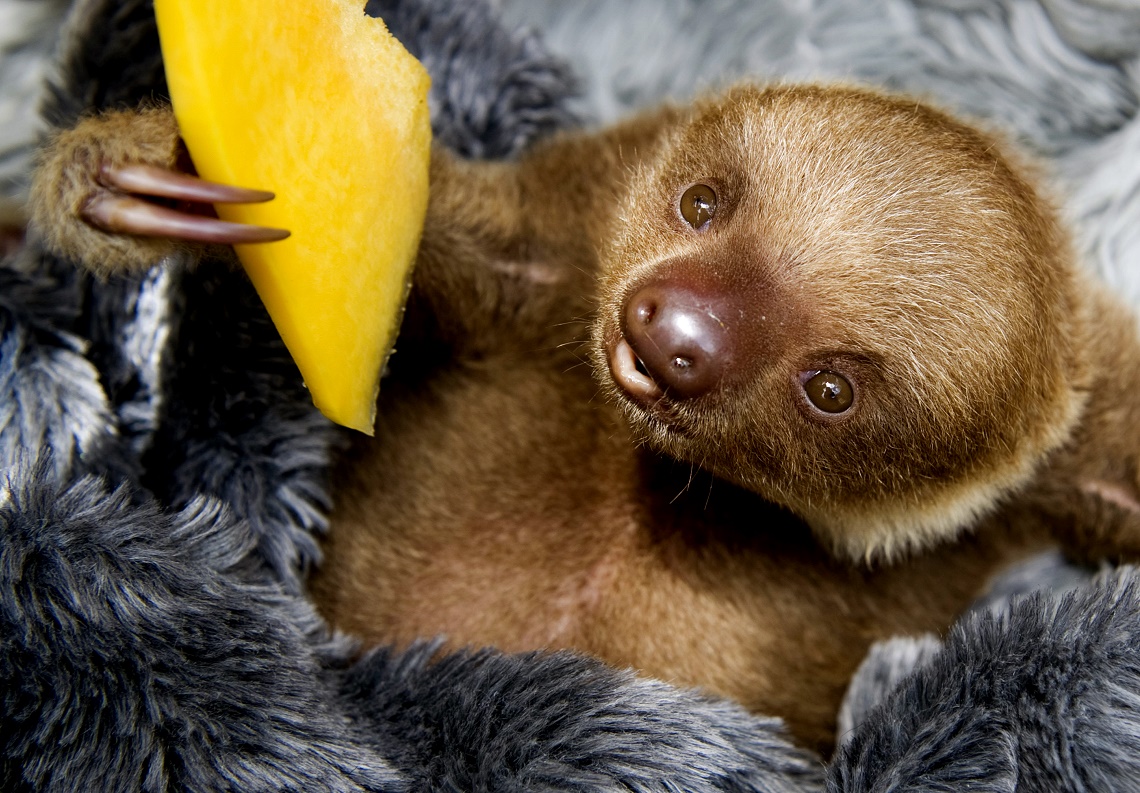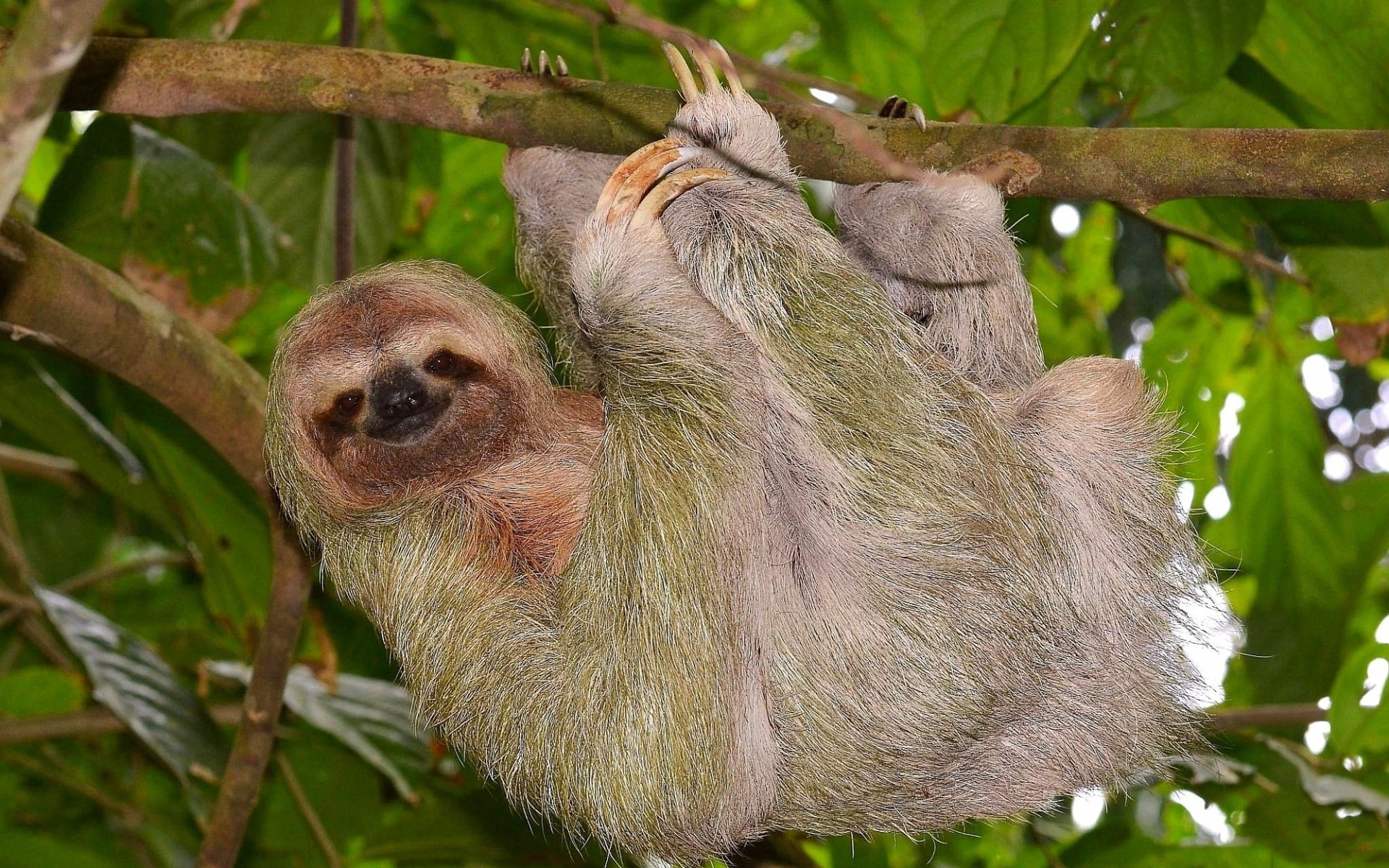

Our main goal is to help get hand-raised sloths back into the wild, because it’s a really long, tedious process. We started the Sloth Institute of Costa Rica in 2014, and it’s grown enormously since then. She's come so far, and she's never been happier. Like all the sloths we've released, we're tracking her with a VHF radio collar, and so we can see how they're doing and track different aspects of their behavior. Now, she's two and a half years old, and she's been released and she's doing really well. Throughout the book, I talk about Monster and how she got her ironic name, but the book came out before we brought her to the release site. ( Watch a video that shows how sloths mate.) What happened to Monster? And I said, “This sloth is a monster!” And that’s how she got her name, which is insane now, because she’s the most adorable, precious, perfect angel soul that could ever exist. I basically didn’t get any sleep that night, and the next morning, one of the other volunteers came in and asked about the new baby sloth. I really couldn’t do anything to get her to calm down, I was holding her, I was walking with her, but I couldn’t get her to sit still. She was this tiny ball of fur who was found when crossing the road, and she was crying, crying, crying for her mom. She came in when she was just two weeks old, and she was basically hysterical. My favorite is a three-toed sloth named Monster. So people take selfies with them, and they have no idea that the sloth is upset. People just think they’re cute and cuddly and they never get stressed out. Maybe because of that, sloths don’t get a lot of respect.Ī lot of people don't know getting hit by cars, dog attacks, and getting caught in electric wires are particularly dangerous threats. I hear some of the craziest things, like sloths never get stressed, which just isn't true. My main motivation was to educate people about sloths, because there’s a lot of misinformation out there. (See " Pictures: Pygmy Sloth Among 100 Species Most At Risk.") Why did you decide to publish Slothlove? I came to love and respect them and wanted to try and save them. I acted as their surrogate mom, and I often had my camera right next to me, and I just started taking pictures of them.

What was it like to start working with sloths after spending so much time with primates?

Then I moved to Costa Rica with Kids Saving the Rainforest and started working at a wildlife-rehabilitation clinic. I moved back to North Carolina and started doing photography of families and weddings and some newspapers. When you’re in another country, everything seems photogenic, and I just started taking pictures of everything. I was working in West Africa for a while, and I had a basic digital camera, and that’s when I started practicing. How did you first become interested in photography? Trull talked to National Geographic about why she chose to shift the focus of her life's work from primates to these rain forest creatures. Along the way she documented her work via photographs, which appear in her first book, Slothlove. nonprofit Kids Saving the Rainforest, Trull has helped nurse many orphaned or abandoned baby sloths, most of which are then released back into the wild. They run an animal rescue center in Gamboa, Panama, and specialize in sloth rehabilitation and relocation.Īt an animal refuge run by the U.S. When orphaned baby sloths are hungry or adults lose their habitat, Yiscel Yángüez and Néstor Correa are on the case.


 0 kommentar(er)
0 kommentar(er)
